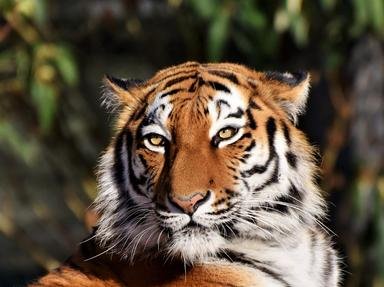Quiz Answer Key and Fun Facts
1. The tiger is one of four species of the genus Panthera, the others being the jaguar, the leopard and the lion. On which continent does the tiger live in the wild?
2. Tiger is taken from the Persian word for "tigris", which is also an important river that runs through Turkey and Iraq. What is the rough translation of the word "tigris"?
3. There are six subspecies of tiger still alive today, all on the endangered, or critically endangered list. Which subspecies of tiger is the most populous?
4. The Siberian tiger is the largest of all the tiger subspecies, living in the wooded mountain regions of eastern Russia. What is the alternative name for this beast?
5. The Sumatran tiger resides on the Indonesian island of Sumatra. True or false?
6. Malayan tigers tend to inhabit the agricultural areas of Malaysia and Thailand. What do they feed on?
7. The Indochinese tiger is worth more to local people and poachers dead than alive. This is due to them being valuable for which type of market?
8. The South China tiger faces extinction if robust measures are not in place to protect them. How many of these tigers are believed to be living in the wild?
9. The sabre tooth tiger became extinct 10,000 years ago. Were these giants of the ice age really tigers?
10. The World Wildlife fund set a target to double the number of tigers in the wild by the year 2022. Why was the year 2022 chosen as a target?
Source: Author
Plodd
This quiz was reviewed by FunTrivia editor
Tizzabelle before going online.
Any errors found in FunTrivia content are routinely corrected through our feedback system.

